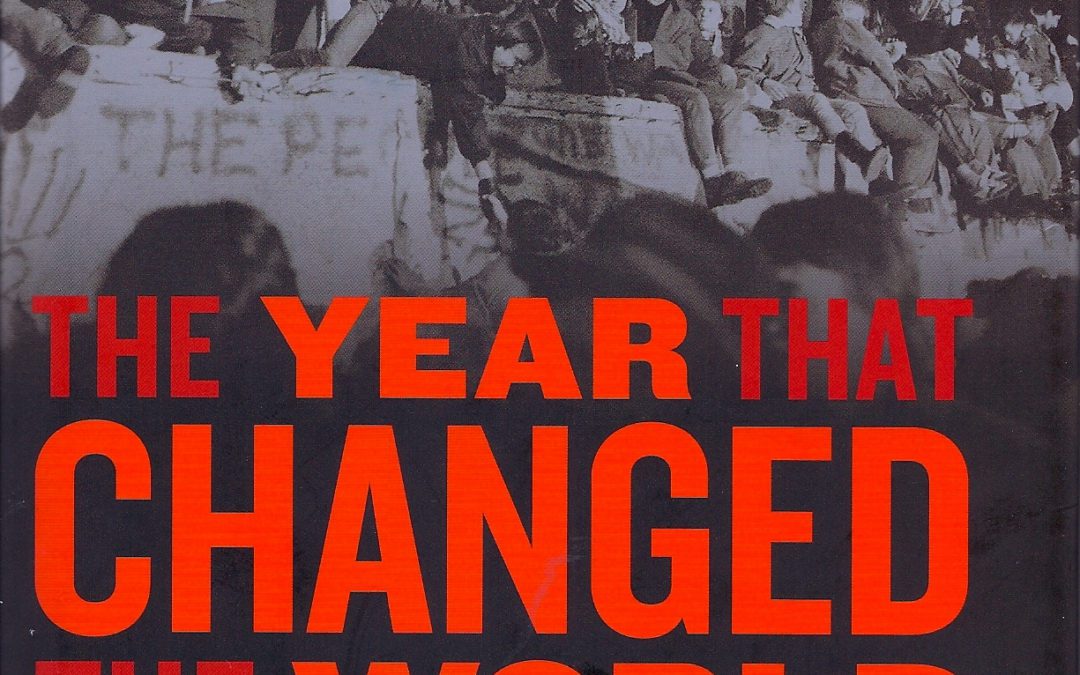Big Brother Takes a Big Hit in 1989
 George Orwell didn’t quite get it right. His landmark novel, 1984, describes the 1980s as a time in which Big Brother is all-seeing and all-controlling. Little did he know that the 1980s would be better known for taking Big Brother down a notch. In particular, 1989 saw the downfall of dictatorship after dictatorship in one of the most remarkable string of events in a single year.
George Orwell didn’t quite get it right. His landmark novel, 1984, describes the 1980s as a time in which Big Brother is all-seeing and all-controlling. Little did he know that the 1980s would be better known for taking Big Brother down a notch. In particular, 1989 saw the downfall of dictatorship after dictatorship in one of the most remarkable string of events in a single year.
My new novel, The Puzzle People, revolves around the rise and fall of the Berlin Wall, so some of the scenes take place during this momentous year. But until I read The Year That Changed the World, written by Newsweek reporter Michael Meyer, I didn’t have a clear picture of what was happening throughout Eastern Europe in Poland, Czechoslovakia, Hungary, and Romania during 1989.
What made 1989 most remarkable was the relative lack of violence as forty years of Communist rule crumbled in country after country in a shockingly short time. But there were exceptions to the peaceful nature of the revolution, of course, most notably in Romania, ruled by the ruthless Nicolae Ceausescu.
Ceausescu was the epitome of the pampered dictator living in splendor while people throughout his country were locked in misery. Meyer describes him as a short, bent little man with deranged eyes and bushy eyebrows who spittled as he talked…His people feared this man as Satan. They referred to him simply as He–He whose likeness weathered on billboards along every highway, He whose collected works yellowed in the windows of every bookstore. While Hungary and Poland experimented with democracy and free markets, while the Soviet Union opened to the world, Romania turned ever inward, wrapped in old-fashioned Marxist conviction and one-man rule.â”
But not for long. While communism collapsed in other countries through “largely painless victories,” Meyer says, in Romania “the struggle was written in blood. Communist masters ordered the police to fire on their citizens. They obeyed. A civil war was fought, albeit briefly.”
The spark for the Romanian revolution ignited when a popular pastor, Laszlo Tokes, was ordered to transfer to another parish because of his outspoken sermons criticizing the Romanian regime. Tokes resisted, Meyer says, and thousands of protestors came to his defense. When Ceausescu answered the protests with his trademark brutality, the people rose up, and the dictator faced the firing squad in short order.
I like the metaphor that Meyer uses to describe what happened. He points out that when Ceausescu would go hunting, his huntsmen would drug a bear and chain it to a fence–easy sport for Romania’s leader. But on one occasion, when the bear did not receive enough sedation, it got up on its hind legs and roared, and Ceausescu fell back in terror. Several huntsmen, hidden in nearby bushes, downed the bear but gave credit to the dictator.
“That could be the story of the Romanian revolution,” Meyer writes. “The bear is the people. They rise up from slumber. The emperor, alarmed, fires wildly and misses his mark. The sharpshooters hidden in the forest take aim and shoot, only this time their target is not the bear but Ceausescu himself.”
1989 was that kind of year.
By Doug Peterson
